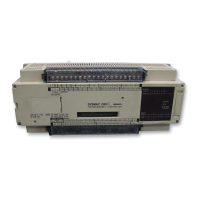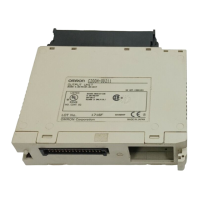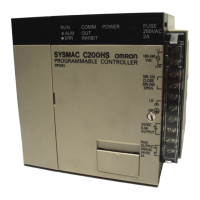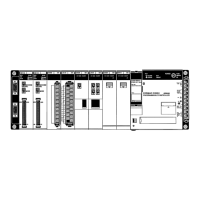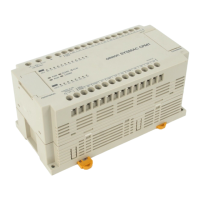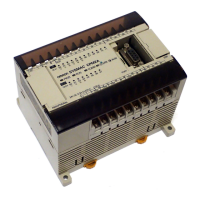53
When connecting the resistor or triac output to a device (such as an incan-
descent lamp) which allows a high inrush current to flow, care must be taken
to ensure the safety of the transistor or triac. The transistors and triacs are
able to withstand an inrush current of ten times the rated current. If the actual
inrush current will exceed that amount, use one of the following two circuits
to reduce it.
This circuit allows a slight current
(about 1/3 of the rated current) to
flow through the load (i.e., the
lamp), thus eliminating any initial
surge of current.
This circuit acts directly on the
inrush current to limit it, but also
reduces the voltage across the
load.
L
+
OUT
COM
L
+
OUT
COM
When connecting TTL circuits to transistor outputs, it is necessary (because
of the transistor’s residual voltage) to connect a pull–up resistor and a CMOS
IC between the two.
When an inductive load is connected to the input or output of the CPU, it is
necessary to connect a surge suppressor or a diode in parallel with the load,
as shown below, to absorb the counter–electromotive force produced by the
load.
L
Surge supressor
OUT
COM
Relay, or triac
output
COM
IN
DC Input
L
Diode
L
OUT
COM
Relay, or transistor
output
+
Diode
Resistor: 50 Ω
Capacitor: 0.47 µF
Voltage: 200 V
Diode: Must withstand
voltages more
than three times
the load voltage
and an average
current of 1 A
Precautions for Inrush
Current
Transistor Output Residual
Voltage
Inductive Load Surge
Suppressors
Preventive Measures Section 3–4

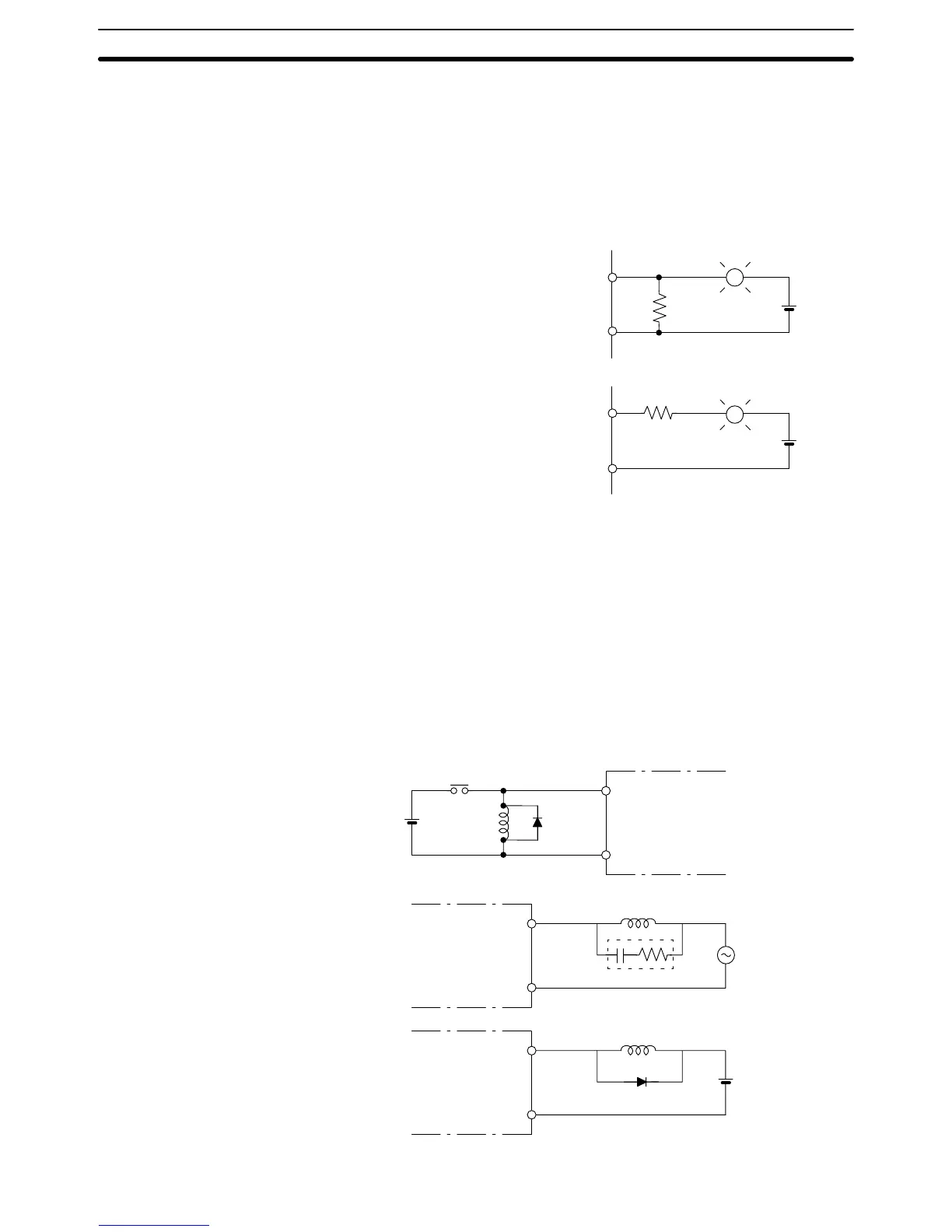